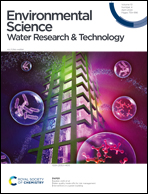Rapid detection of viable Bacteroides in sewage-contaminated water using sodium dodecyl sulfate and propidium monoazide combined with loop-mediated isothermal amplification (LAMP) assay
Abstract
Microbial source tracking using nucleic acid-based amplification techniques, including qPCR and LAMP is now routinely used to detect indicator bacteria in human faecal-contaminated water. Although these techniques are sensitive and specific, these assays are unable to distinguish between viable and non-viable bacteria, which limits their application as a standard method for water quality surveillance. Propidium monoazide (PMA) dye penetrates compromised cell membranes and binds to dsDNA, inhibiting amplification by nucleic acid-based techniques. In this study, we integrated PMA pre-treatment into our previously optimized Bac-LAMP assay to enable the specific detection of viable human-specific Bacteroides in environmental water samples. To increase the efficiency of PMA in penetrating all dead cells, we used sodium dodecyl sulfate (SDS) before PMA treatment. The optimised SDS–PMA LAMP assay can completely inhibit the amplification of non-viable Bacteroides with a concentration of up to 8 × 105 CFU mL−1 without adversely affecting the detection of DNA from viable cells. The assay has a sensitivity of 8 × 102 CFU mL−1 with the LAMP time to positive of less than 60 minutes without the need for complex DNA isolation. Our optimized method represents a highly promising approach for accurately discriminating between viable and non-viable Bacteroides, exhibiting sensitivity and specificity that are on par with PMA–qPCR. By expanding the array of tools available for microbial source tracking in environmental waters, our improved assay has significant potential to advance water quality monitoring and health protection efforts.



 Please wait while we load your content...
Please wait while we load your content...